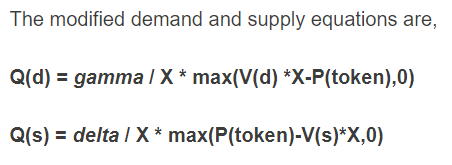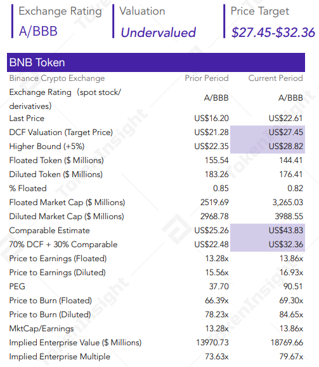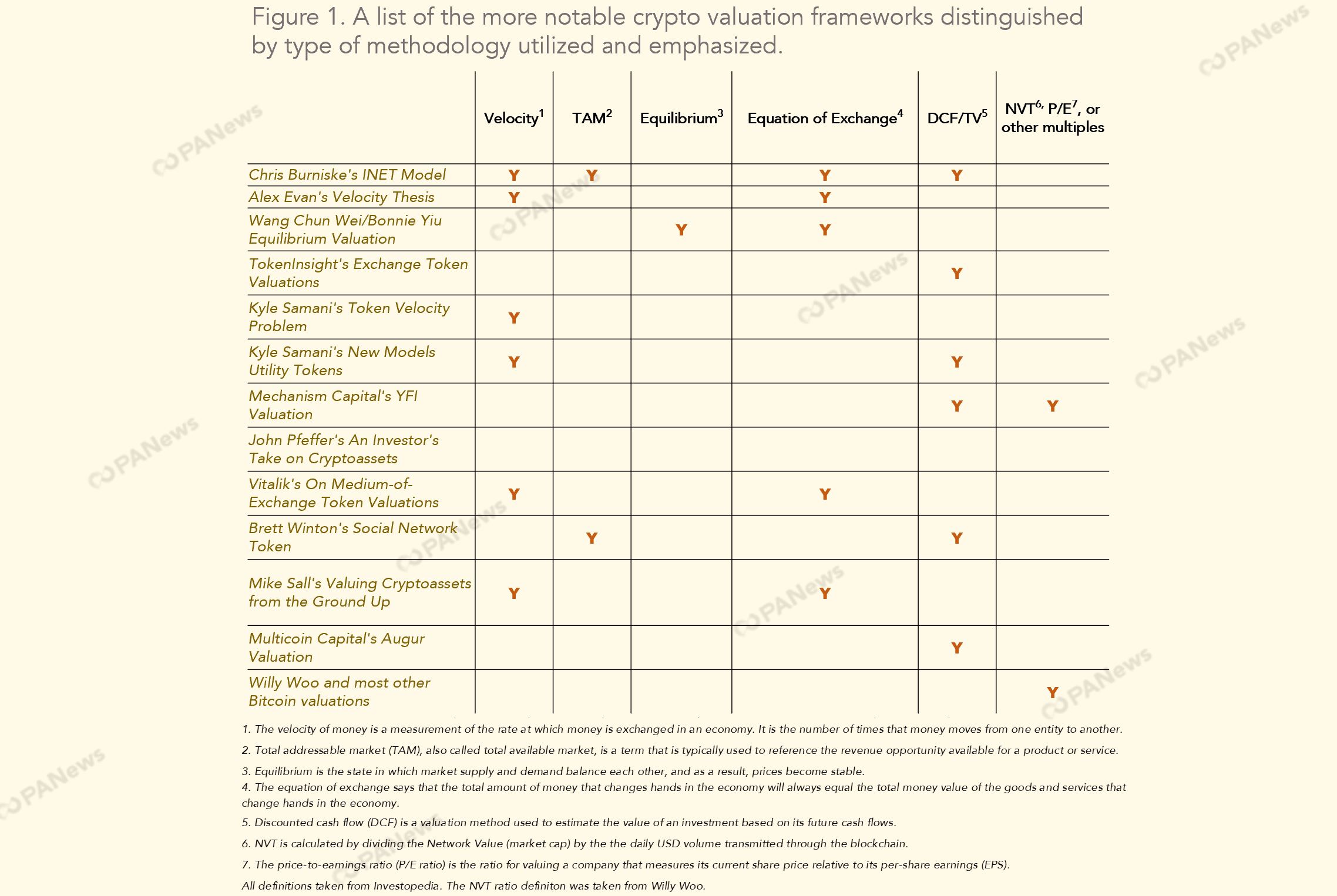
INTRODUCTION
The one
underlying theme that we have seen in the myriad valuation attempts of
cryptocurrencies is the all too common, proverbial “we are still too early”.
Valuations, which is referring to the exercise of running financial models in
excel based on numerous factors that are subject to other subjective exercises
of 拍脑袋 (a Chinese way of saying pulling
numbers out of your ass), are always early considering the fact that we are
running models out to 10 years later in some cases. Early in the sense of “when
mass adoption?” and/or early in the sense of lack of adequate historical data.
The latter is definitely a concomitant of the former but there is a reason why
modeling crypto valuations is important in which I’ll get to in a second.
The second
crypto bull run was the solidifying of the word “blockchain” in mainstream
media and also the large attraction of traditional finance people into the
world of crypto. And what they brought with them was the frameworks (outdated
some could say) and theoretical thinking behind how to value these novel
digital assets that are borne out of the internet. At the time, these digital
assets were more or less penny stocks (some could argue that they still are)
but they were enough to capture the attention of some that wanted to justify
their prices.
In this piece,
I would like to highlight some notable crypto valuation frameworks that caught
the crux of attention during the second bull run in crypto and then hopefully
seek out what frameworks are being used to this day to deduce a valuation of a
cryptocurrency.
Before we dive
in, I want to first acknowledge what we already know, which is that, any
valuation model isn’t run for the sole purpose of predicting accurate prices.
Equity research reports done by numerous young witted minds have gotten bad rap
for just blowing hot air. The same may more or less could be said of crypto
valuations but to side step and point back to my question posed in the title of
this article, I’d say it is neither an exercise for shilling nor futility, but
rather an exercise to work out the kinks and incentives of crypto token models
in bolstering adoption. Interestingly enough, I’m sure Satoshi never ran a
valuation model for bitcoin, but working out an economic model as perfectly
crafted as that of Bitcoin is an effort worth trying.
Also, keep in
mind that it’s easy to conflate crypto valuation frameworks and tokenomic
frameworks (and there’s a ton of these out there as well), but this piece will
focus more on the former. And let’s not misconstrue these valuation frameworks
for being price targets, one could say these are isomorphic, but there are
nuances to its intentions.
Chris
Burniske’s INET Model and Update
By far the
first attempt at a full fledged valuation framework to gain traction has to be
Chris Burniske’s (Partner at Placeholder)
INET Model published back in 2017. Although the article itself has amassed
close to 17,000 claps on the original article’s Medium post, a few iterations have been made to the original framework which more
or less still leave the framework open ended; considering the arduous task of
properly adapting to what we envision digital assets to be.
Published over
3 years ago, the model is still considered one of the more clear cut ways to
view a crypto asset’s yearly utility value and its present value based on those
future expected utility values that are derived from the crypto asset’s market
penetration of an existing market. Very similar to a typical cash flow model,
but with nuances that includes fitting an S-curve growth or “Take Over Time” to
account for initial mainstream adoption, using the equation of exchange in
place of revenues/profits, and a float value after Bonders and Hodlers.
Even though
there have been many attempts before at valuing bitcoin and all its
intricacies, Burniske’s INET model has been, hands down, the general valuation
gateway to crypto assets and without a doubt, a lure for others to stab at the
model’s overlooked faults. His follow
up to this piece, which was published in 2019, attempted to bifurcate what
we think of cryptoassets to be: either in the buckets of being Capital Assets,
Consumable/Transformable Assets, or Store of Value Assets.
Despite
Burniske’s framework being such an immediate hit, many drilled down into his
unintentional mistake of keeping velocity, in the equation of exchange, linear
or correlated 1:1 with growth.
Alex
Evans’ Velocity Approach
The next
iteration, which is more of an adaptation to Burniske’s framework is coincidentally,
Alex Evans, who joined the reigns at Placeholder with Burniske back in 2018. A
UVA econ grad who felt first hand the vehement effects of weak economies in
Greece during the recession, Alex proposes
that velocity should always be dynamically changing and should “model
endogenous velocity as time-varying and distinct from the money supply term”.
The issues with velocity has been an ongoing debate with many attempted
velocity thesis being published with the overall consensus being: high velocity
bad, low velocity good, with the conclusion consisting of non-tested proposals
on how to lower velocity.
Evans tries to
dissect the individual factors affecting velocity by leveraging the use of
Baumol-Tobin’s “cash inventories” approach, which essentially dictates consumer
behavior with how much cash they are willing to hold on hand. Or specifically
the tradeoffs “between the liquidity provided by holding money (the ability to
carry out transactions) and the interest forgone by holding one’s assets in the
form of non-interest bearing money.”
By taking the
derivative of the total cost function and obtaining the cost-minimizing value
of N, which corresponds to the # of transfers each year taken by a user to
purchase a token, then taking this cost-minimizing N function back into the
average money balance (Y/2N) to obtain the average token holding, or money
demanded.
“We can thus
say that VOLT ‘money demanded’ is equal to the cost-minimizing VOLT balance
that users hold each year, which is a function of the GDP that the VOLT economy
facilitates, the expected rate of return on the store-of-value asset, and the
cost per transaction.”
If
you’re confused, don’t worry. You’re not the only one.
Wang
Chun Wei and Bonnie Yiu’s Equilibrium Valuation
The next
valuation framework I would like to highlight is a bit more simplistic in the
sense that it uses something that we’ve all been taught in our economics 101
course: supply and demand curve equilibrium. This piece,
published in 2018 by Wang Chun Wei and Bonnie Yiu of Consulere, is a very
underrated framework. In essence, they introduce market clearing conditions by
setting both a supply and demand curve equal in terms of the price of a
transaction in the native tokens.

When the two
equations above are set equal to each other you can then solve for the
equilibrium price (# of tokens required for a service) and the quantity (units
of service demanded).

As with the
case of many crypto valuation frameworks, this model also utilizes the Quantity
Theory of Money, or Equation of Exchange, in solving for the optimal token
value. Taking P(token)* and Q* from above and substituting them into the MV=PQ
equation, you can then solve for X, which is the notation for the exchange rate
for tokens to 1 USD, or token value. This could get a bit convoluted to some
but more crypto valuation frameworks tend to be. And may I add that this model
also is victim to the velocity issue as both writers note “Increasing token
velocity reduces token value.” In some regards, “this thesis is directionally
correct, but hard to operationalize”, as Alex Evans puts it.
On
the Velocity Issue
By now you can
see an underlying theme of the above valuation frameworks in which they all
center on the velocity issue. The core issue that was proposed eloquently by
Kyle Samani, Managing Partner at Multicoin Capital, is simply that tokens that
experience high velocity, while being linear with transaction volume, will
induce zero network value per the equation below:
Average
Network Value = Total Transaction Volume / Velocity
But as Alex
Evans and a handful of others have thrown rebuttals, velocity should not be
assumed linear but rather dynamically dependent on other factors. The velocity
issue could really be laid out in its own separate report so I’m going to avoid
diving further, but will leave it on this quote shared to us at PANews by Kyle
Samani who still firmly stands by his thesis:
“I think
that among most sophisticated entrepreneurs and investors, it is now widely
accepted that the velocity problem is real, even if we don't have strong
evidence in the market that medium-of-exchange tokens (which are the kind that
are subject to the velocity problem) cannot sustain value (for example, XRP is
still #4 on CoinMarketCap).”
- Kyle Samani, Managing Partner at Multicoin Capital
TokenInsight’s
exchange token valuations
TokenInsight
has been one of the few teams actually implementing a valuation framework to
deduce a target price for a token. Considering exchanges are one of the few
businesses in the industry making money, their respective native tokens have
been prime examples of utilizing a Discounted Cash Flow methodology
(specifically the H-Model) considering that they more or less align with how a
security token would behave. And it’s utterly crucial that exchanges have been
reporting their financials similar to how a public company would.
Taken from
their recent August
2020: Exchange Token Valuation Report, TokenInsight could probably take the
gold standard of creating a crypto “Fitch ratings” style of valuation. With a
hybrid approach of combining a DCF value along with using a comparables
valuations, TokenInsight has given it a more holistic approach, not to mention
their qualitative factors for leveraging a grade based rating.

There are
other examples of exchange token valuation frameworks such as the one by Decentral
Park Capital, in which they emphasize these tokens by their Price to Assets
ratio.
Overview
of Token Valuations
The list below
is a good snapshot of the more notable pieces of valuing cryptocurrencies. It’s
not a complete exhaustive and exclusive list by any means, but a great starting
point for anyone who dares to build upon these frameworks for cryptocurrencies.

Conclusion
As most of the
above aforementioned crypto valuation frameworks were published around 2017,
there really hasn’t been any new groundbreaking frameworks put forth since. But
there are a handful of funds that occasionally do put out their own valuation
piece, albeit with muted fanfare.
Have the swarm of changes we’ve seen in
blockchain, DeFi, the rotation of market leaders, etc. have inadvertently
positioned these frameworks obsolete? Are we still trying to find the right
rational frameworks to value irrational markets? Regardless of whether these
exercises are formulating an accurate crypto valuation, the value of
consistently molding and tinkering the way we approach it is something we
shouldn’t debase.
As stated in
the beginning, these exercises have been a way in rethinking token models and
accentuating faults that may have not been noticed. This can lead us to better
questions such as, is it the token’s velocity or the protocol’s staking
incentives that we should dissect further? How should we divvy up capital
allocation in a fair manner? Or does it stem from the way tokens are originally
minted and burned? Or instead of burning tokens should protocols “buy-back and
make” as proposed
by Placeholder?
“There is
no one size fits all model for crypto valuations, and valuations are
complicated, especially in the crypto market. As we are still in the early
stage in this fast-moving crypto financial market, I think we need to attract
significant more inflow of a diverse range of institutional money such hedge
funds, banks, asset managers, mutual funds, etc. to drive the crypto market, in
general, to be even more efficient.”
- Johnson Xu, Director of Research at Huobi DeFi Labs and Former Head of
Research at TokenInsight, told PANews.
For the
newcomers that carry a finance background, stabbing at these through the lens
of a CFA curriculum is a natural inclination. But to the event we want to
venture down this road of price prediction based on fundamental drivers, the
below points will eventually need to show fruition before we end up swerving
into futility:
-More
reporting and transparency around token projects
-More
historical data (this one is obvious)
-More
competitors to the existing market leaders
-Better data
usage of layer 2 applications
-More HODLers
of other cryptocurrencies
-Better
tokenomics
Although the
above suggestions may or may not be in conflict with the original ethos of
crypto, mass adoption is going to need more structure and frameworks rather
than going at it in a haphazard manner.
Thanks to
Kyle Samani, Managing Partner at Multicoin Capital and Johnson Xu, Director of
Research at Huobi DeFi Labs for their insights on this subject matter.
Sources
https://image.tokeninsight.com/levelPdf/TI-Exchange_Token_Valuation-2020.08.pdf
https://medium.com/blockchannel/on-value-velocity-and-monetary-theory-a-new-approach-to-cryptoasset-valuations-32c9b22e3b6f
https://www.coindesk.com/blockchain-token-velocity-problem
https://s3.eu-west-2.amazonaws.com/john-pfeffer/An+Investor%27s+Take+on+Cryptoassets+v6.pdf
https://medium.com/@wintonARK/how-to-value-a-crypto-asset-a-model-e0548e9b6e4e
https://vitalik.ca/general/2017/10/17/moe.html
https://hackernoon.com/an-equilibrium-crypto-token-valuation-model-cd9281fe77db
https://medium.com/@sall/valuing-cryptoassets-from-the-ground-up-441ad5a9ff03










